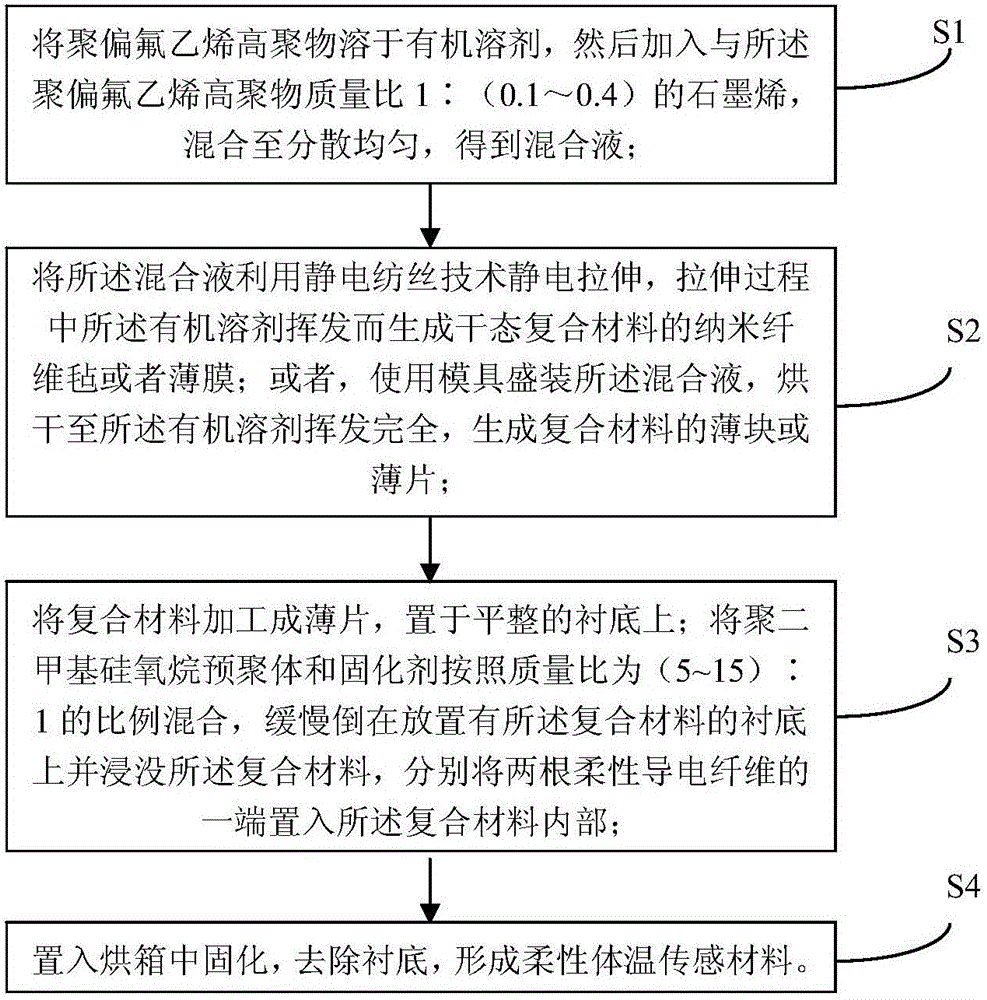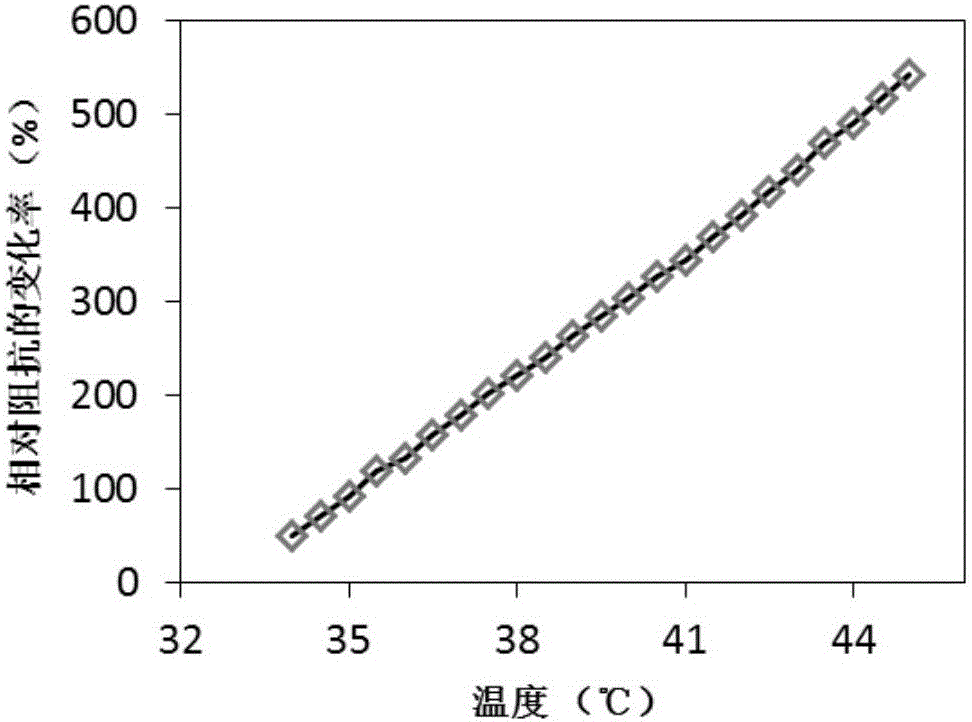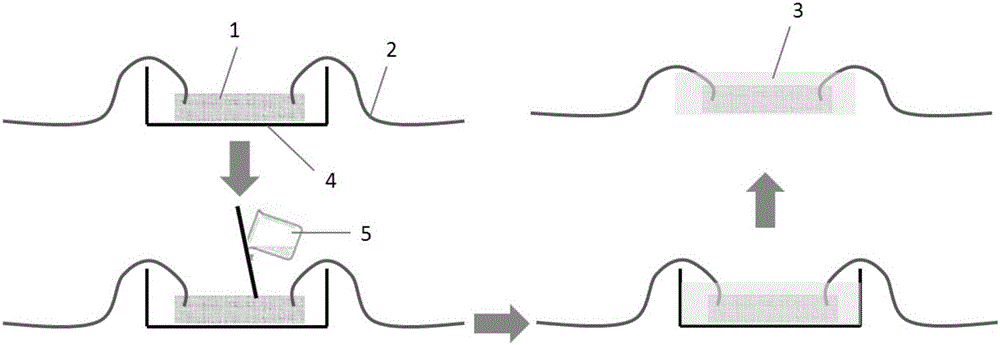Flexible body temperature sensing material and preparation method therefor
A body temperature sensing and flexible technology, applied in the field of temperature sensing, can solve the problems of skin detachment from data, instability, poor skin adhesion, etc., and achieve the effects of good human compatibility, easy processing, and slow heat dissipation
- Summary
- Abstract
- Description
- Claims
- Application Information
AI Technical Summary
Problems solved by technology
Method used
Image
Examples
preparation example Construction
[0032] figure 1 A flow chart of the preparation method of the flexible body temperature sensing material is given, and the preparation method of the flexible body temperature material of the present invention includes the following steps:
[0033] S1. Dissolving the polyvinylidene fluoride polymer in an organic solvent, then adding graphene with a mass ratio of 1: (0.1 to 0.4) to the polyvinylidene fluoride polymer, and mixing until uniformly dispersed to obtain a mixed solution;
[0034] S2. Electrostatically stretching the mixed solution using electrospinning technology, during the stretching process, the organic solvent volatilizes to form a nanofiber mat or film of a dry composite material; or, use a mold to hold the mixed solution, and dry it Until the organic solvent is completely volatilized, a thin block or sheet of the composite material is generated;
[0035] S3. Process the composite material into a thin sheet and place it on a flat substrate; mix the polydimethyls...
Embodiment
[0038] The preparation method of the flexible body temperature sensing material of this embodiment includes the following steps:
[0039] (1) Dissolve polyvinylidene fluoride polymers (molecular weight greater than 5000) in organic solvents, such as acetone, tetrahydrofuran, methyl ethyl acetone, dimethylformamide, dimethyl sulfoxide, N-methylpyrrolidone, etc. One or more solvent mixtures. Place it in a closed environment at about 40°C and stir until the polyvinylidene fluoride is completely dissolved, and then the mass ratio of the polyvinylidene fluoride to the polyvinylidene fluoride is 1: (0.1-0.4) with few or multiple layers of graphene (the particle size is 70nm-200nm, The specific surface area is 150m 2 / g~250m 2 / g) placed in the solution, and continued ultrasonic stirring for 5 to 15 minutes until the solution was uniformly dispersed.
[0040] (2) Among the solvents used above, if a solvent with a low boiling point is used, such as acetone or tetrahydrofuran, the mix...
PUM
| Property | Measurement | Unit |
|---|---|---|
| particle diameter | aaaaa | aaaaa |
| specific surface area | aaaaa | aaaaa |
| thickness | aaaaa | aaaaa |
Abstract
Description
Claims
Application Information
 Login to View More
Login to View More - R&D
- Intellectual Property
- Life Sciences
- Materials
- Tech Scout
- Unparalleled Data Quality
- Higher Quality Content
- 60% Fewer Hallucinations
Browse by: Latest US Patents, China's latest patents, Technical Efficacy Thesaurus, Application Domain, Technology Topic, Popular Technical Reports.
© 2025 PatSnap. All rights reserved.Legal|Privacy policy|Modern Slavery Act Transparency Statement|Sitemap|About US| Contact US: help@patsnap.com



